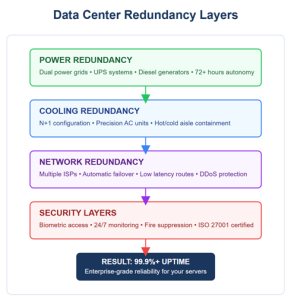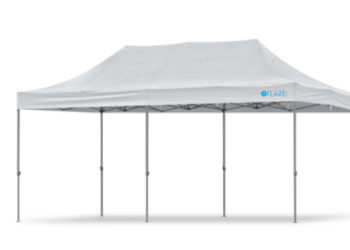Having your server room today is like owning a luxury yacht—it may look impressive, but it burns money even while docked (and quite a lot of it). Colocation services offer a smarter alternative, combining full control over your hardware with top-tier infrastructure shared across multiple clients. Redundancy at every level, physical security, and costs distributed among dozens of companies—that’s the winning formula that makes secure colocation a core part of IT strategies, from startups to large enterprises.
Companies relying solely on their own server rooms are finding themselves tilting at windmills—costly battles with no real chance of winning. Let’s take a closer look at how colocation services are shifting the on-premise paradigm and why they’re becoming the go-to choice for businesses of all sizes.
Tip: Learn more in a detailed guide to colocation in data centers.
What Are Colocation Services, and Why Are They Replacing In-House Server Rooms?
Imagine owning a fleet of high-performance servers—without having to build your own data center. That’s exactly how colocation in a data center works: you retain ownership of your hardware, but it lives in a professional environment with infrastructure that would otherwise be out of reach. Your servers are placed in rented space within a third-party data center—ranging from individual rack units to fully locked rooms.
This model offers a key advantage: it separates technology ownership from infrastructure management. While you invest in servers, storage, and networking gear that give you a competitive edge, the colocation provider takes care of everything else. Redundant power, cooling, connectivity, and physical security—all the elements, that turn a pile of electronics into a reliable IT system.
Colocation hosting represents the sweet spot between the cloud and an on-premise server room. You keep full control over your hardware and its configuration while shedding the burden of managing critical infrastructure. For most companies, this translates into significantly lower capital expenditures and turning unpredictable maintenance costs into clear, fixed monthly fees.
Redundancy as a Foundation—Why Secure Colocation Outperforms In-House Server Rooms
When power fails in an on-premises server room, it’s a race against time. UPS batteries last an hour—maybe two. Or not even that. A diesel generator? Only if you have one, and if it works. In a professional data center, this kind of drama doesn’t exist—redundancy isn’t a luxury; it’s the standard. Every critical system is implemented at least twice, and often more.
Power typically comes from two independent lines, each from a different substation. If one fails, the other seamlessly takes over. In between, an army of UPS systems and diesel generators with days’ worth of fuel ensures continuous operation. Cooling systems follow the N+1 principle—there’s always one more unit running than strictly necessary. If one AC unit fails, the others automatically increase output to compensate.
Network connectivity within colocation services adds yet another layer of reliability. While a typical in-house server room relies on one or maybe two internet providers, colocation data centers offer access to dozens of carriers. Automatic route switching ensures that the failure of a single provider goes unnoticed. Plus, proximity to major internet exchange points means lower latency and faster connections.

Physical and Cybersecurity—Why Hackers and Thieves Don’t Stand a Chance
An in-house server room often resembles a bank vault guarded by a janitor. In contrast, secure colocation offers multilayered protection that combines physical barriers with digital shields. Access to the data center requires biometric authentication, passage through multiple security zones, and continuous video surveillance. Every movement is recorded, every entry logged.
On the cyber front, professional security teams work around the clock. DDoS attacks are blocked by robust filtering systems, while next-generation firewalls analyze traffic in real time. Certifications like ISO 27001 or SOC 2 aren’t just pieces of paper—they represent a commitment to the highest security standards. Colocation services provide a level of protection that most companies simply can’t afford to implement on their own. It just wouldn’t make financial sense.
The Financial Math of Colocation—Turning Fixed Costs into Predictable Expenses
Building your own server room requires millions in upfront investment—even before the first server goes live. Each line item, such as redundant power, cooling systems, and security infrastructure, carries a significant cost. Colocation in a data center transforms these capital expenses into operational costs shared among dozens of customers.
The economics of sharing is fully at work here—you pay only for the space and services you actually use. Need more capacity? Rent another rack. Project finished? Scale back your space. This flexibility, combined with predictable monthly costs, makes colocation hosting an attractive option for companies that prefer to invest in their business, not in concrete and diesel generators.
The Digital Future Doesn’t Wait for Latecomers
Colocation services represent an evolutionary step that separates successful companies from those falling behind. The combination of guaranteed availability, professional security, and optimized costs creates an environment where technology serves the business—not the other way around.







